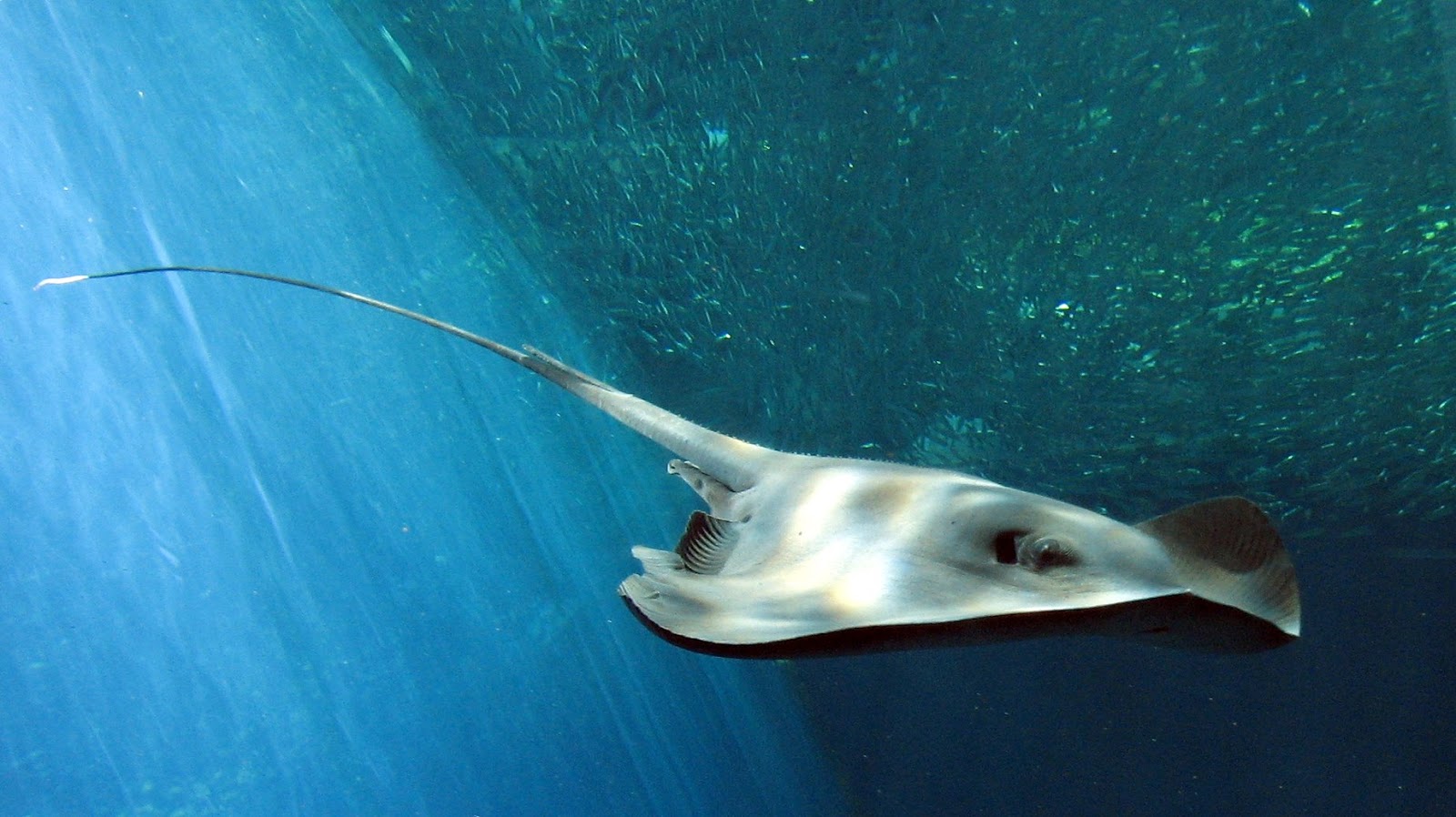 |
| Image: Makoto Nakashima Pteroplatytrygon violacea |
The pelagic zone is that part of the sea that lies away from the sand, rocks and reefs of the seabed and the coast. Life here is dominated by a featureless expanse of various shades of blue in all directions. It's a life constantly on the fin; there can be no hiding in the nooks and crannies of a coral reef or resting on the soft sand of the ocean floor.
We've seen some very strange and unexpected pelagic creatures in our time, like the Blanket Octopus, Tomopteris worms and peculiar snails like the Sea Butterfly. We've also seen ocean-faring stingrays like the enormous, filter-feeding Manta Ray and the Cownose Ray which descends to the seabed to snatch up crustaceans and molluscs. Those are both members of a family of unusual, frequently massive stingrays known as the Eagle Rays.
 |
| Image: Lyle & Han-Yu's Wedding. |
Pelagic Stingrays are not huge, usually reaching about 60 cm (2 feet) across. Yet they can still get over 1.2 metres (4 ft) long! As in other Whiptails, the tail is a lot longer than the rest of the body, and comes armed with a serrated, venomous stinger.
Video: Aaron Rana
Most stingrays swim using mesmerising undulations of their gigantic pectoral fins, but the Pelagic uses more of a flapping motion akin to the Eagle Rays. On the one hand (pectoral fin) this reduces their manoeuvrability, on the other hand (pectoral fin) it increases their lift and power.
Pelagic Stingrays also use their pectoral fins to manhandle (fishfinnle?) prey and direct it to their mouth. They primarily feed on crustaceans like krill and amphipods, but they'll also tackle squid, fish and jellyfish. So that's most things, really. Pelagic Stingrays have pointy teeth for gripping onto slippery prey, in contrast to most rays that crush through tough shells using their blunt teeth.
 |
| Image: Scott Perry |
It's so odd to have your mouth and your eyes so far apart that you can't see what you're eating while you're eating it.
 |
| Range. Confirmed sightings in dark blue |
Pelagic Stingrays migrate to keep up with warmer waters. There are populations in the Pacific Ocean who spend the winter months near the equator and swim north to California or Japan in the spring. Some Atlantic populations seem to divide their time between the Gulf Stream and more northerly waters.
 |
| Image: Scott Perry |
There's that jet-setting lifestyle. No use getting weighed down by the kids for months on end!

4 comments:
they've got to fly! :)
Eagle rays and whiptailed rays. there must be a ray for everything! Also, loving those long tails and wide roaming life style
The proper aquatic adaptation of "manhandle" is "fin-nagle."
@TexWisGirl: Yup! Always on the move.
@Porakiya Draekojin: Ha! Yeah, there are a lot of rays. And I agree, those tails are fantastic!
@Crunchy: Ah, I shall remember this!
Post a Comment